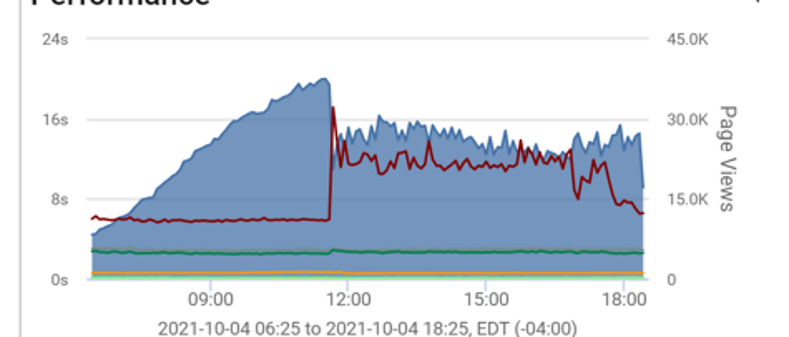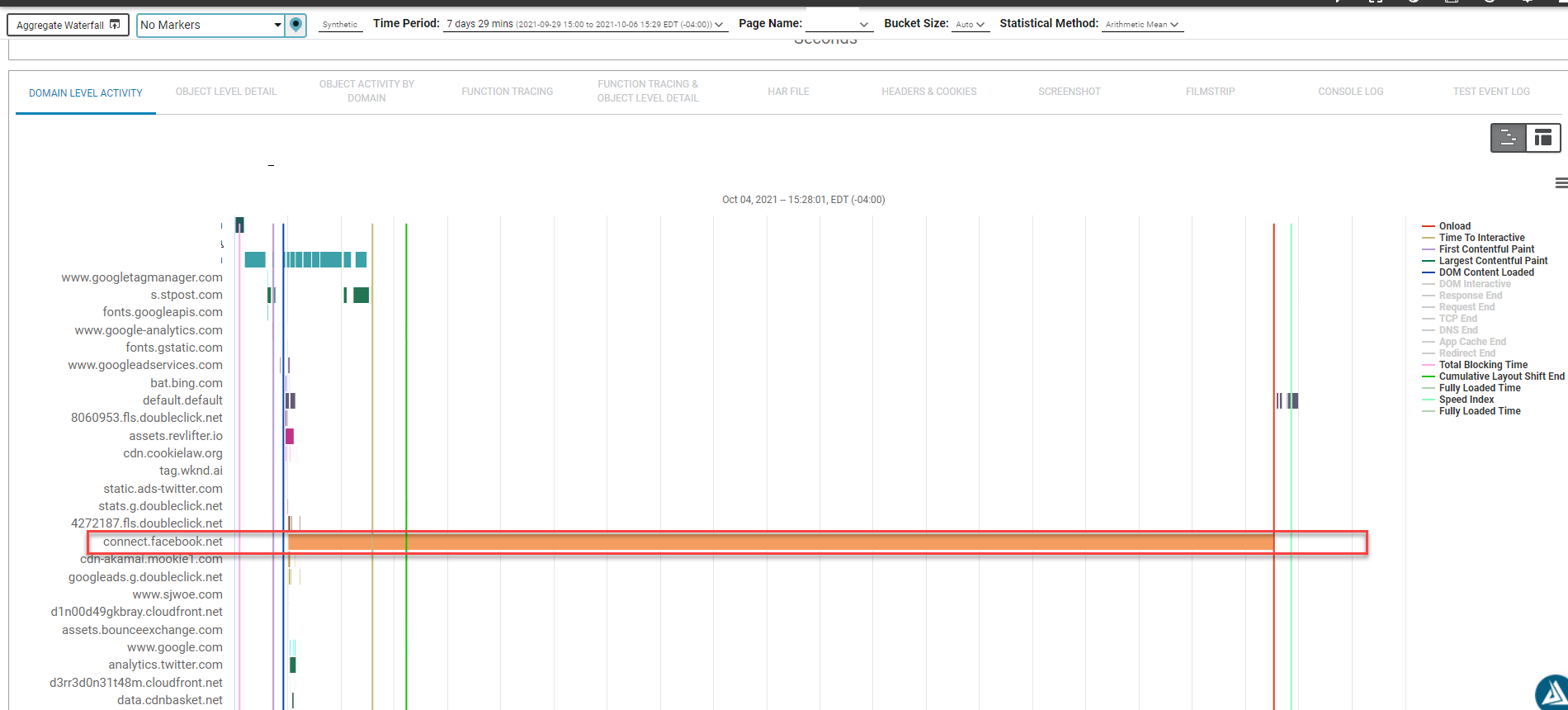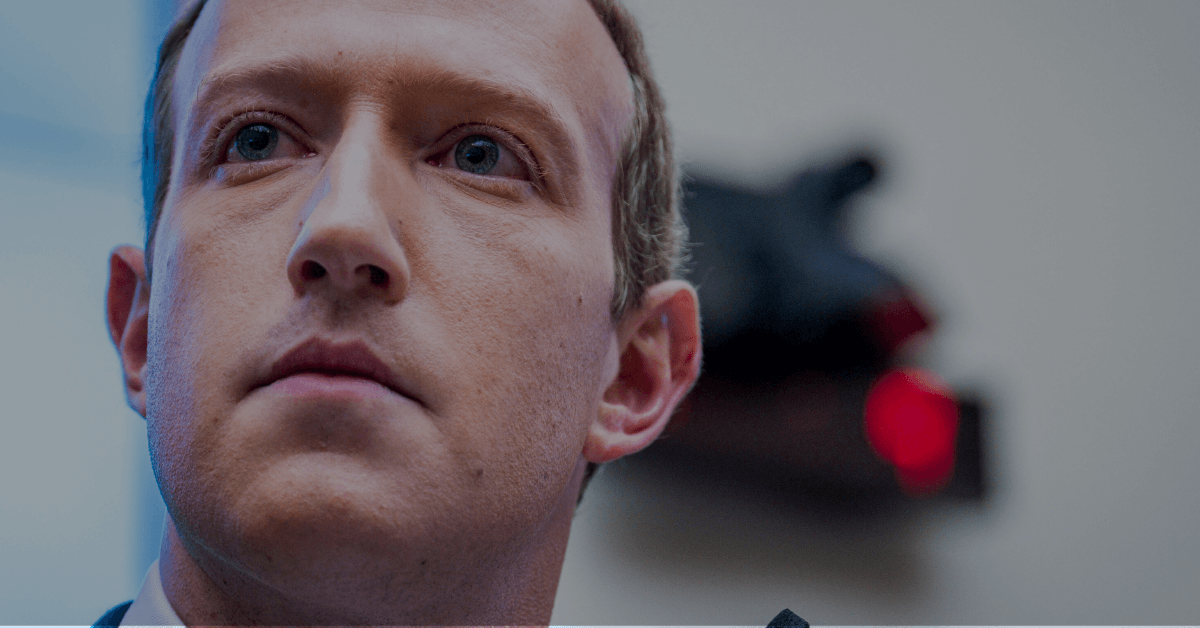How Facebook Broke the Internet
Protecting Your Site’s Revenue from Social Media Platform Outages
Special Contributors: Adam Wood, Rachel Grant, Mike Dockins, Dan Revellese
Imagine a world where Facebook and its full suite of applications, including Instagram and WhatsApp, vanished within minutes. This week, we would not have to imagine too hard about this happening as it became a 6-hour long reality for billions of users and online businesses around the world. So, why did this disruption happen, and how does this blunder impact you and your customers?
How Facebook Broke the Internet
Many rely on Facebook as a service, not only to conduct their daily social lives, but also as a source of revenue, communicating brand identity, and engaging with customers. While countless memes have since been created, the impact of being cut off and the implications it may have on your website’s performance and bottom line should not be taken lightly.
According to estimates calculated by Snopes, Facebook may have lost $79 million in ad revenue, and nearly a $1 billion loss throughout the global economy. How did the fallout affect your website?
Vulnerability
Social media content is present on billions of web pages around the globe. Adding Facebook content, such as embedded posts, reviews, or ads, provides important visibility for a brand to reach their target audience. However, in the unlikely event that this content stops responding during the natural course of a web browser loading a page, then the page may break. Adding content to the page in a way that will not cause a website to fail is instrumental.
What Happened?
According to a Facebook blog post communicating more details about the October 4 outage, all connections to the company’s global data centers were disrupted during a routine network and infrastructure maintenance job. This occurrence triggered an unhealthy network connection. Although Facebook's DNS servers were still functional, they were no longer reachable. Due to the disconnect between the internet and the company's servers, users were unable to properly access the Facebook website or mobile applications.
With Facebook down, the social media content that so many website depend on every second of the day could not be delivered until connectivity was restored.
Let’s Explore in More Detail
Content on an eCommerce website, such as text, images, videos, and tags, contributes to a customer's shopping experience and overall site performance. Tags are snippets of JavaScript code implemented on a website for services such as Facebook.
After a web page has finished loading essential content, it is common practice for additional, less-critical activities and content to activate on the page. This event is referred to as “Onload” or “The Onload Event”. It is very important to the digital customer experience that the Onload Event happen appropriately and quickly.
So, what happens when there is a delay preventing the Onload Event from executing? Some pages may spin indefinitely or become unacceptably slow, while others may load incorrectly without displaying essential content or functionality critical to the customer journey.
Below is a view of Blue Triangle's Real-Time Real-User Dashboard highlighting the impact of improper loading during the Facebook outage. Notice the decline of both engagement and revenue. 
Typically, this retail customer experiences an upward trend in page views, orders, and revenue between the hours of 11:36 AM to 6PM. However, during the incident, the normal sales process was brought to a halt.
How Blue Triangle Customers Avoided Business Impact
Many Blue Triangle customers were immediately alerted to the problem and equipped with a timely resolution. Others were seemingly not affected at all.
One proven recommendation is to make a page’s loading success not depend on social media or third-party tag content. However, for those that feel it is necessary for a service to load before the Onload Event or in the <HEAD></HEAD> section of the page, it is suggested to do so sparingly.
Since Facebook tags on most customer websites load after the Onload Event, they were not affected in the same way as those who had social media content load early. Below is an example of a Blue Triangle customer with optimal Tag Governance who successfully maintained site performance.

For customers that followed these practices, we observed minor impact on Session Activity and revenue outcomes. Since these web pages did not rely on Facebook content prior to the Onload Event, the service interruption did not meaningfully obstruct a customer's ability to shop and checkout online.
Websites with hard coded tags may have been more challenged than simply turning off the Facebook tag. In this case, we usually recommend that a customer use a tag container, which allows tags to be removed without having to edit the website code.
Customers benefitting from a Content Security Policy (CSP) could seamlessly modify their CSP to block Facebook content until connectivity was restored. The process employs API automation to update the CSP in real-time, which allows slow or problem tags to be removed from the Approved Domain List.
Additionally, Anomaly Detection and SLA Thresholds notified customers of the irregularity, as visualized by the Domain Details' aggregate waterfall.

Utilizing Tag Inventory to isolate where and how a particular tag on a page is loading, customers can confidently take corrective action.
The Bottom Line: Companies that implement good Tag Governance around third-party tags were less affected by the global Facebook outage on Monday, October 4th, 2021. Supported by internal findings, it is critical to monitor your domains in real-time and ensure non-critical, third-party content does not jeopardize your website.
Blue Triangle is Here to Protect You from Such Unforeseeable Events
We are on a mission to help digital teams gain a connected view of their marketing, web performance, and third-party tag analytics while monitoring for security vulnerabilities. With Blue Triangle, teams can track the experience of every web and mobile app visitor in real-time and identify specific web performance, third-party tag, and purchase path issues measurably impacting revenue.
Learn More
Learn more about the Blue Triangle Content Security Policy Manager to help proactively protect your site’s performance and revenue during a social media outage.

During the holiday rush, every shopper matters
Optimize the customer journey before the eCommerce event of the year.



